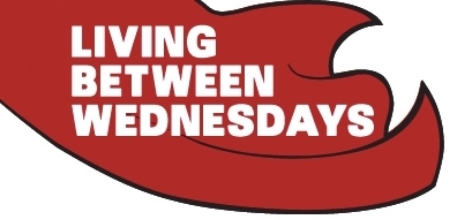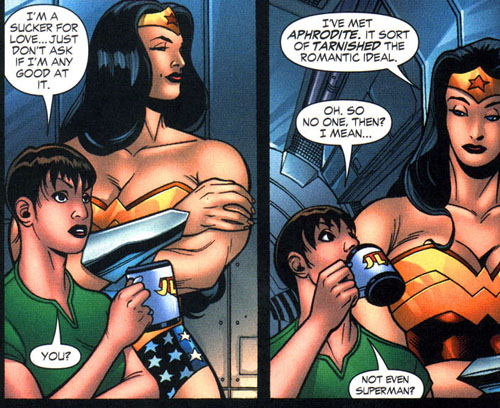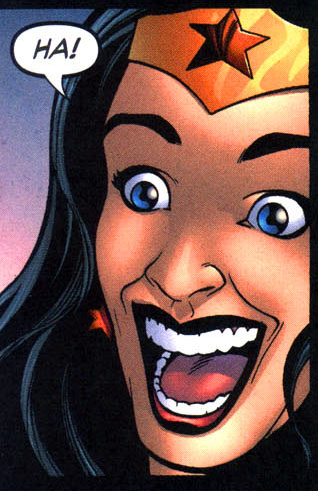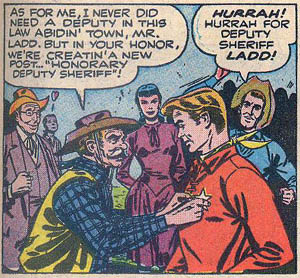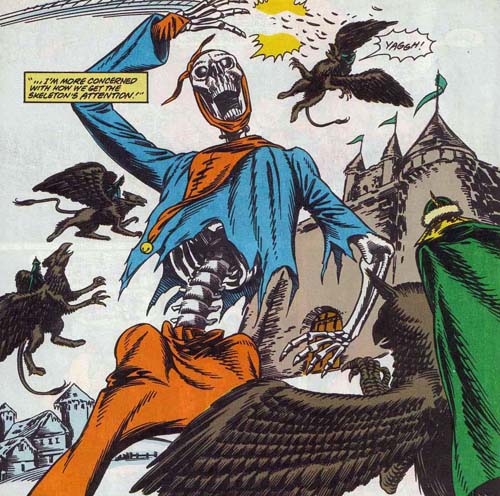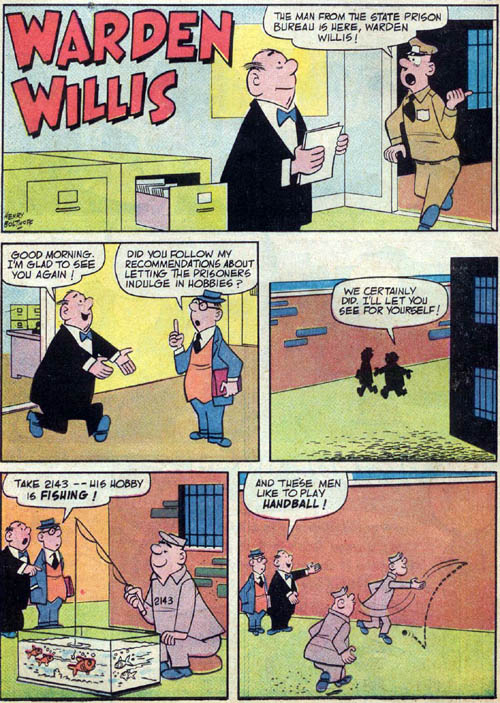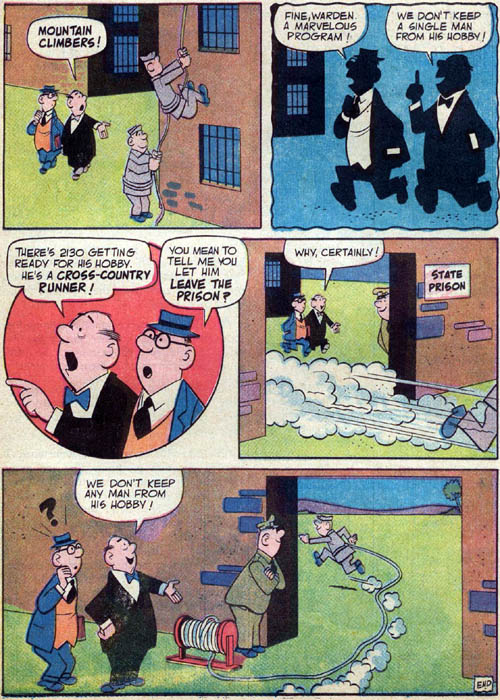I bought comics! And now you get to read about them!
Flashpoint No. 2 (and about a million miniseries) (DC)
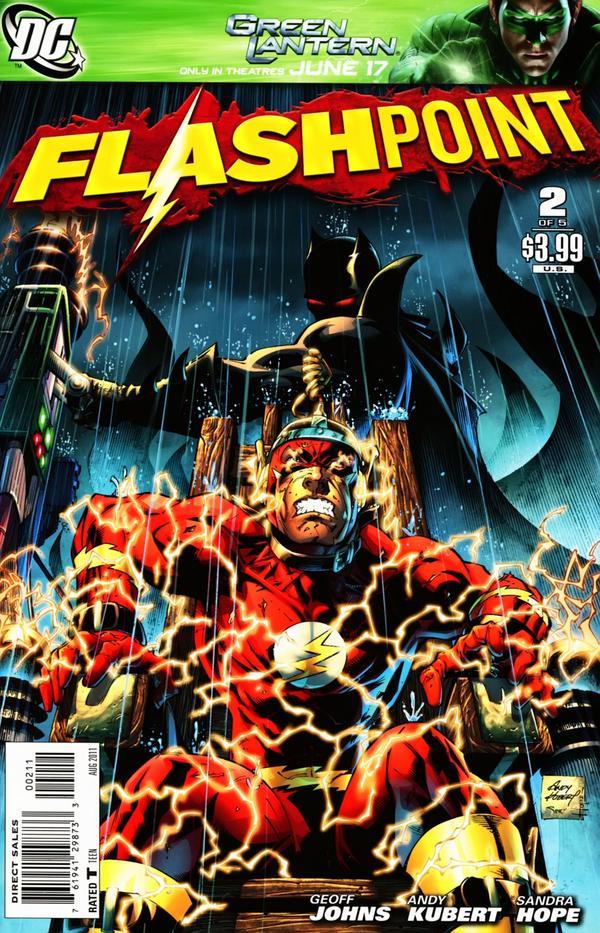
Why it's Here: I'm honestly not sure. Is it because I feel like I should at least make a pass at reviewing DC's Summer crossover? Because I want to see what kind of tomfoolery is going to spark the Big Reset in September? Is it just that I'm a sucker for an alternate universe story? No idea.
Non Spoiler Summary: The Reverse Flash has messed with time and now Everything is Different and Crazy and Dark. Batman is Thomas Wayne! Atlantis done blowed up most of Europe! Dogs are marrying cats!
The Very Best Thing About It: There's a lot of decent alternate-universe-everything-is-different stuff going on: less-used characters like Shade the Changing Man and the Outsider rub elbows with interestingly-tweaked versions of old standards such as the five-kids-and-a-tiger version of Captain Marvel Thunder. Plus it's always fun to see Dr Thirteen.
The Very Worst Thing About It: It just feels a bit... tepid. A lot of the characters in this world have clear motivations (stop the war between Atlantis and the Amazons, don't get killed, steal things, etc) but the series itself lacks any sort of clear reason for being. The world has changed because Reverse Flash did... something, or a lot of things, right? And he did it to... mess with the Flash? To what end? Honestly, the Sadistic Mastermind Who Hatches Overly-Elaborate Schemes and Gloats All the Time villain archetype is near universally the most tedious and irritating thing in comics. Reverse Flash is Hush is terrible and the world that he has created has no dramatic reason to exist. If it wasn't being played up as a BIG! FAT! IMPORTANT! CROSSOVER! this could just be a standalone Flash story with no consequences outside of his own book, and not many there.
I might take all this back if some later issue reveals that, say, the absence of Barry Allen caused the heroes to lose during the original Crisis and this is the shitty final
Also, the entire series takes place at night or under heavy cloud cover. THE WORLD IS LITERALLY DARK and the symbolism heavy-handed.
Who Made It: A Geoff Johns joint. Plus a lot of artists and auxiliary writers.
Closing Comments: I'm going to give this thing a couple of more chances. This means that I am part of the event problem. I feel terrible about this.
The Tooth (Oni)
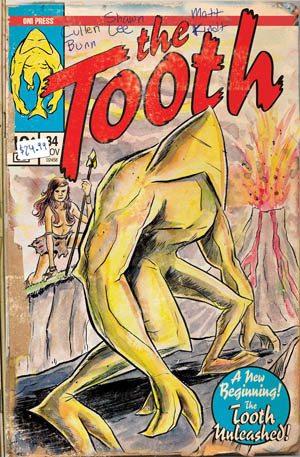
Why It's Here: It's an original graphic novel about an anthropomorphic tooth that fights monsters. That's amazing.
Non Spoiler Summary: Think old Man-Thing or Swamp Thing: the travels and travails of an improbable creature and its human cohorts in a world crawling with demons and monsters and dark science. And it's framed as a story arc in a long-running series, complete with letters pages and callbacks to non-existent continuity. Fun!
The Very Best Thing About It: That it's a pretty much perfect recreation of the Weird Wandering Monster subgenre from days of yore, complete with purple narration and crazy monsters and an internal mythology that makes things like a tooth monster that splits its time between killing things and living in a dude's mouth make sense.
The Very Worst Thing About It: My boss just expressed interest in the odd book sitting on my desk, whereupon I realized that there was no way for me to explain it to a layperson without sounding like a crazy man. That's unfortunate.
Who Made It: Cullen Bunn and Shawn Lee wrote it and Matt Kindt drawed it.
Isle of 100,000 Graves (Fantagraphics)
Why I'm Keeping This Short: It's a Jason comic. Do you like those? Then you will like this. Do you not like those? You won't like this. If you have no idea what I'm talking about... Do you like the idea of a slice-of-life story in a very strange setting where all of the characters are idiosyncratically-drawn anthropomorphic dogs and birds? Well there you go then.
50 Girls 50 (Image)
Why I'm Keeping This Short: Because there's only so much you can say about this story if you're not getting mad about it. It's got a dumb title (at least I think it does, because that's the way it's written in the indicia) and a generic sci-fi story with really nice art - the only really remarkable thing about it is the number of plot hoops that Doug Murray and Frank Cho jumped through in order to set up their cheesecake-fest. "Earth is starving and we need to find another planet! Look, a wormhole that messes up the Y chromosome - better send a spaceship full of hot science-babes to look for one." "Oh, no! This jungle planet we landed on has a crazy atmosphere that dissolves plastic! We are forced to wander around in tiny scraps of cloth and spear-fight giant insects until we can find a way off!" And so on. If Frank Cho's jungle ladies appeal to or repulse you, this book is likely to do the same.
Criminal: The Last of the Innocent (Icon)
Why I'm Keeping This Short: Because I foolishly have not read any Criminal before and I have no idea if discussing the plot of this issue will be spoilery. Succinctly, it is excellent.

